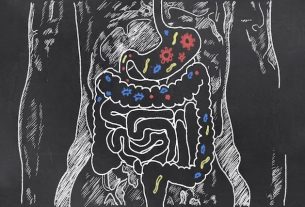Autism spectrum disorder (ASD) is a group of changes in neurological development that can affect to some degree the child’s communication, social interaction and/or behavior, causing difficulty in forming sentences, making facial expressions or behaving within the environment. “social norm”.
The identification of autism spectrum disorder is normally made in childhood, but it can persist during adolescence and adulthood, and it is important to maintain follow-up with a multidisciplinary team, including a pediatrician, speech therapist, psychotherapist and occupational therapist, to improve symptoms and quality of life.
Autism spectrum disorder (ASD) is not an illness, but rather a different way of expressing and reacting to oneself and society. It does not tend to worsen with age, however, the sooner the diagnosis is made and individualized treatment begins, the better the quality of life.

How to identify ASD
Autism spectrum disorder is generally identified in the first 5 years of life, through characteristics such as:
1. Changes in communication
One of the strongest characteristics of autism spectrum disorder is the change in the development of communication, where the child/person may present a delay in the beginning of speech or complete absence, difficulty in forming sentences or asking for what they want.
Additionally, it may also not respond when called or have a changed tone of voice, which may sound like singing or similar to a robot.
2. Difficulty or lack of social interaction
Difficulties in social interaction can arise from the first months of life, such as avoiding looking into people’s eyes or directly into people’s faces, lack of facial expressions, lack of interest in being with other people or not looking for anyone when alone. .
3. Changes in behavior
Behavioral changes occur at different levels, ranging from repetitions such as clapping or walking from one side to the other for no apparent reason, to not accepting new routines.
As behavior is often different from the “social norm”, there may be episodes of agitation, irritability or crying, due to not feeling comfortable in the environment.
Understand better the characteristics of autism.
Is ASD the same as autism?
Autism is one of the types of autism spectrum disorder, which also includes other conditions that affect neurological development.
Generally speaking, autism spectrum disorder includes:
- Classic autism or autistic disorder: Generally, this type of ASD causes more severe symptoms in language, social interaction, communication, interests and behavior, and may also present intellectual disabilities, and is generally identified up to 3 years of age. Learn more about autism;
- Asperger’s syndrome: It is a milder type of autism spectrum disorder, and the child may have more difficulty interacting socially. However, they do not show any change in their learning, and may have above-average learning and more focus and interest in certain subjects. Understand better what Asperger’s syndrome is.
- Childhood disintegrative disorder or Heller syndrome: is the rarest and most severe type of ASD, in which the child presents normal motor, intellectual, language and social interaction development until around 2 and 4 years of age, and, from a certain point onwards, begins to lose all abilities previously acquired.
Furthermore, another type of ASD is pervasive developmental disorder, which is a more severe form of Asperger’s Syndrome and less severe than classic autism.
Possible causes
The causes of ASD are not yet fully known, however, genetic, hereditary and environmental factors can contribute to its development, the main ones being:
- Family history of ASD, especially having a sibling with the disorder;
- Genetic changes, such as Down syndrome, fragile X syndrome, Rett syndrome or tuberous sclerosis;
- Viral infections or complications during pregnancy;
- Premature birth, before 26 weeks;
- High-risk pregnancy;
- Elderly parents;
- Low weight at birth.
Furthermore, the consumption of alcoholic beverages, tobacco, medication or other drugs during pregnancy can also increase the risk of developing ASD.
How the treatment is carried out
The treatment of autism spectrum disorder is carried out by a multidisciplinary team, including a pediatrician, psychologist, psychiatrist, pedagogue, speech therapist and occupational therapist, for example, adapting strategies according to the characteristics of each child/person, as there is no single standard treatment for ASD.
Thus, the main treatments for autism spectrum disorder are:
1. Behavioral therapy
Behavioral therapy aims to reduce behavioral problems, teach new skills and develop social, language and self-care skills.
This type of therapy generally uses reward systems to encourage “acceptable” behaviors and reduce problematic behaviors, and should be done with guidance from professionals such as psychologists or occupational therapists.
Treatment must also involve the participation of the family and those closest to them, as it is important that they know how to recognize the limitations and capabilities of the child with ASD. This allows the therapies developed by professionals to be maintained at home and in the closest environments.
2. Speech therapy
Speech therapy may be indicated to help stimulate speech, construct sentences and improve voice modulation, and should always be guided by a speech therapist.
Furthermore, speech therapy sessions are important to help children with ASD communicate, improving their coexistence with other people.
3. Use of medications
Although there is no specific medication to treat autism spectrum disorder, the doctor may prescribe antipsychotic, antidepressant, anxiolytic or anticonvulsant medications to help alleviate some symptoms, such as repetitive behavior, aggression, anxiety, depression or attention deficit disorder. and hyperactivity (ADHD), for example.
Furthermore, in the case of children with epilepsy or seizures associated with ASD, the doctor may recommend the use of anticonvulsant medications. See what the main treatments for autism are.

Sign up for our newsletter and stay up to date with exclusive news
that can transform your routine!
Warning: Undefined array key "title" in /home/storelat/public_html/wp-content/plugins/link-whisper-premium/templates/frontend/related-posts.php on line 12
Warning: Undefined array key "title_tag" in /home/storelat/public_html/wp-content/plugins/link-whisper-premium/templates/frontend/related-posts.php on line 13



